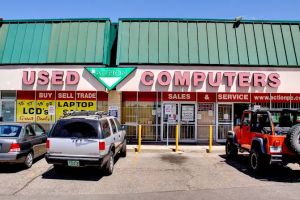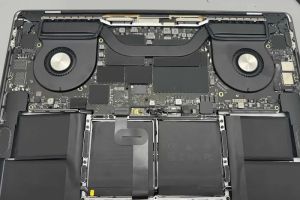1. Introduction: Understanding the Risk of Computer Viruses
Computer viruses can be a major threat to your system and personal data. Whether you're using your computer for work, personal tasks, or entertainment, the presence of a virus can cause slowdowns, crashes, and data loss. But don't panic—there are ways to remove a virus from your computer without losing your valuable files. In this article, we will walk you through the steps you need to take to protect your data while eliminating a virus from your system.

Action Computers Inc. -- Denver Location
2890 S Colorado Blvd F, Denver, CO 80222, USA
2. Why It’s Important to Remove Viruses Without Losing Data
Many people are afraid that removing a virus might result in losing important files or corrupting their operating system. However, taking the proper precautions can ensure that your personal data remains intact. Knowing how to safely remove a virus is crucial in avoiding data loss, and it can save you from having to restore your system to factory settings or using backups.

Fix It Computer Repair
2638 Geranium Ln, Fort Collins, CO 80525, USA
3. How to Safely Remove a Virus Without Losing Data
Here are the steps you should follow to remove a virus from your computer without compromising your data:
- Step 1: Disconnect from the Internet
The first thing you should do when you suspect your computer is infected is disconnect from the internet. This will prevent the virus from spreading further or transmitting your personal information. Simply unplug your ethernet cable or disconnect from Wi-Fi. - Step 2: Enter Safe Mode
Restart your computer and boot it into safe mode. This is a special diagnostic mode that loads only essential system files, preventing the virus from running. On Windows, you can enter safe mode by pressing the F8 key during startup, or by holding down the shift key and clicking “Restart” if you’re using Windows 10. - Step 3: Run a Full Antivirus Scan
Use your antivirus software to run a full system scan. Most modern antivirus programs can detect and remove common viruses. If you don't have an antivirus program installed, there are free tools like Malwarebytes or Windows Defender that can be used to scan for malware and other harmful software. - Step 4: Manually Remove the Virus (if Necessary)
In some cases, an antivirus program might not be able to fully remove the virus. If you’re familiar with how your system works, you can manually remove malicious files. Look for any unfamiliar or suspicious files in your Task Manager or file explorer and delete them. Be sure to back up your important files before doing this step to avoid accidental deletion. - Step 5: Update Your Operating System and Software
After successfully removing the virus, it’s essential to update your operating system and software. Viruses often exploit outdated programs and security holes, so keeping everything up to date is a good preventive measure to avoid future infections. - Step 6: Back Up Your Data Regularly
Once your system is virus-free, it’s time to back up your data. Regularly backing up your files to an external drive or cloud storage ensures that you won’t lose important documents, photos, and other files in case of future infections or other system issues.
4. How to Protect Your Computer from Future Viruses
Preventing future infections is just as important as removing the current virus. Here are some tips to protect your computer from viruses:
- Install Antivirus Software: Ensure that you have reliable antivirus software running on your system. Programs like Norton, McAfee, or Avast provide real-time protection from viruses and malware.
- Keep Software Updated: Regularly update your operating system and applications. Updates often contain security patches that protect your system from vulnerabilities.
- Avoid Suspicious Links: Be cautious when clicking on links from unknown sources. Phishing emails and infected websites are common ways for viruses to spread.
- Use a Firewall: Turn on your firewall to block unauthorized access to your computer. This adds an extra layer of protection, especially when browsing the web.
- Practice Safe Browsing Habits: Always be cautious about downloading files, software, or applications from untrusted sources. Stick to reputable websites and app stores.
5. What to Do If You Can't Remove the Virus
In some cases, you may not be able to remove the virus on your own. If this happens, don’t hesitate to seek professional help. A technician from Computer Repair can diagnose the issue, remove the virus, and ensure that your data is safely recovered. Professional assistance can save you time and effort while ensuring your system is properly restored.
6. Conclusion: Keep Your Data Safe While Removing a Virus
Removing a virus from your computer doesn’t have to result in data loss if you follow the right steps. By taking the necessary precautions, using trusted antivirus tools, and keeping your system updated, you can protect your computer and your personal data from viruses. For expert help and support with virus removal, visit Computer Repair today.






























